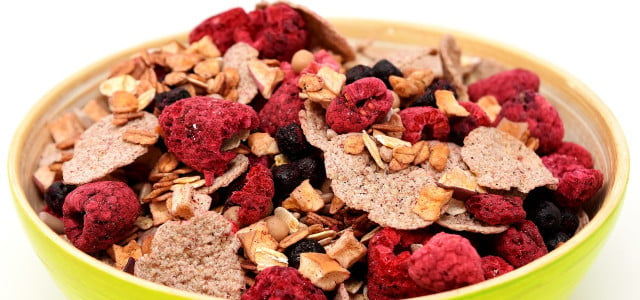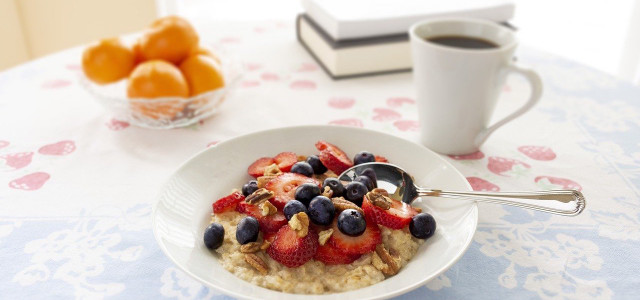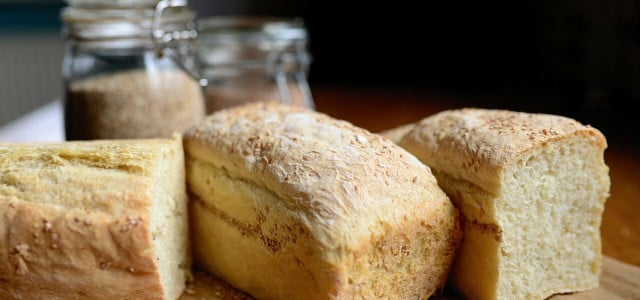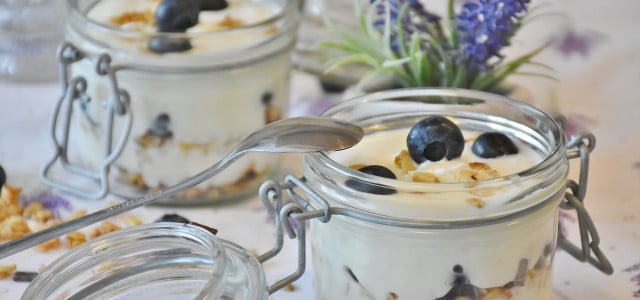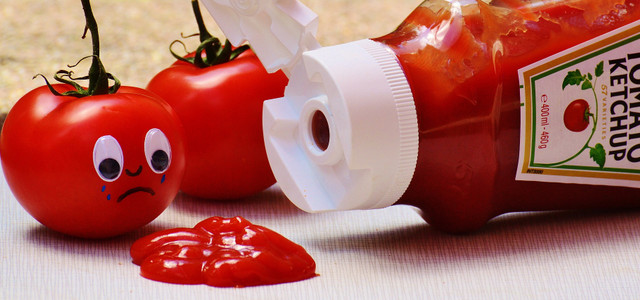High fructose corn syrup is damaging to our bodies and the environment. Here’re 10 foods with high fructose corn syrup that you might not have known about.
High fructose corn syrup is an artificial sugar made from corn starch. It is linked to many serious health problems, such as diabetes and heart disease, and experts believe it is the key factor in today’s obesity epidemic. HFCS is a common sweetener used in most store-bought, processed foods, such as sodas, candy, fast food, baked goods, and ice cream. The use of HFCS is so widespread that it may be added to many other food items that you may not expect.
The environmental impact of high fructose corn syrup is substantial. Most corn used to make corn syrup is grown as a monoculture, which means that the land is solely used to grow corn. Large monocultures are often riddled with pests, and high amounts of pesticides are often required so that the corn can survive. As a result, this leads to mass soil pollution and soil erosion. A 2019 study shows that HFCS also produces large amounts of carbon emissions.
The best way to avoid HFCS is to stop eating processed, packaged foods, and instead to cook from scratch as much as you can. Cooking from scratch means that you can ensure you know all of the ingredients going into your food.
1. Instant Oatmeal
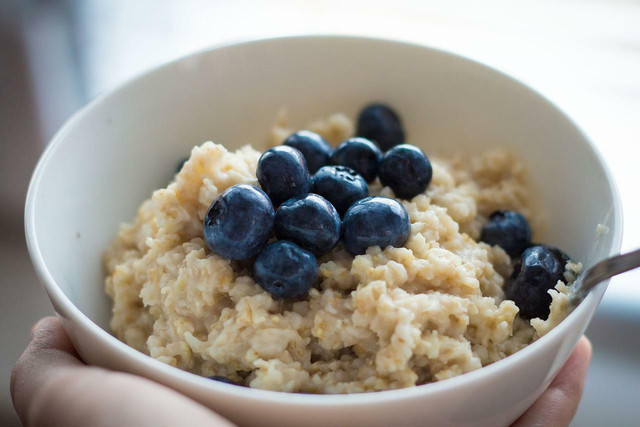


(Foto: CC0 / Pixabay / iha31)
Processed oatmeal that comes in instant packets is often full of HFCS, as well as lots of chemicals and additives. One packet of Quaker Oatmeal in the maple and brown sugar flavour contains 12 grams of sugar. This is a large amount of sugar, as the American Health Association recommends no more than 9 teaspoons (36 grams) of sugar per day for men and 6 teaspoons (25 grams) of sugar for women and children. Oats are one of the healthiest foods that you can eat, as they are rich in fibre and vitamins and minerals. The healthiest way to make oatmeal is by using oats in their purest form, as whole eats.
In terms of the environment, processed, flavoured instant oatmeal is damaging for the environment as each portion comes individually packaged, which creates a lot of waste compared to buying one big bag of whole oats.
2. Granola and Granola Bars



(Foto: CC0 / Pixabay / WikimediaImages)
Granola and granola bars are often advertised as being ‘healthy’, but in reality, they are very processed and full of refined grains and HFCS, as well as other added sugars. The healthy oats that are put in granola and granola bars are counter balanced by the added HFCS, which makes them similar to candy bars and desserts such as cake and donuts, in terms of their nutritional value. The USDA has even labeled granola bars as a ‘grain-based desert’, because they contain so much sugar.
Instead of buying store-bought granola and granola bars, make your own homemade granola bars, that contain natural ingredients such as whole oats, nuts, and dried fruits.
3. Protein Bars
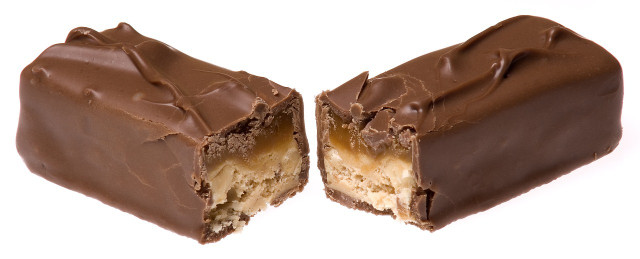


(Foto: CC0 / Pixabay / WikimediaImages)
Protein bars may be a convenient snack, especially if you workout and you want a quick source of calories and protein, but these bars are often full of HFCS as well as other sugars. Many protein bars contain more sugar than typical junk food such as donuts, candies, and cakes. HFCS is added to enhance the flavour, as well as many additives and preservatives, so they are far from natural and healthy. Replacing protein bars with a healthier alternative is a great way to cut out sugar from your diet.
Try making these three-ingredient energy bars, which are made with whole foods such as nuts and other natural ingredients to give you protein in a more healthy and balanced way, that will not spike your blood sugar levels. Alternatively, if you want a quick snack on the go, opt for a banana or a handful of nuts.
4. Breads
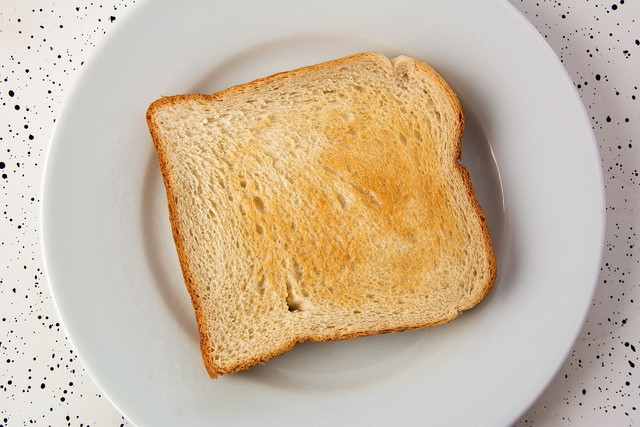


(Foto: CC0 / Pixabay / CordMediaStuttgart)
Processed, packaged store-bought bread also contains a lot of HFCS, and even whole wheat bread can contain HFCS. A study presented at the European Congress on Obesity found that two or more daily servings of white bread can put patients at a 40 percent higher risk of becoming overweight and obese. Processed bread is not just damaging for your body, but also for the environment due to the plastic packing that it comes in, which creates a lot of waste.
Instead of buying store-bought bread that contains many unnecessary ingredients, buy bread from a bakery that uses whole ingredients. A traditional loaf contains only four ingredients (flour, yeast, water and salt). Alternatively make a loaf of spelt bread, or buckwheat bread.
5. Yogurt
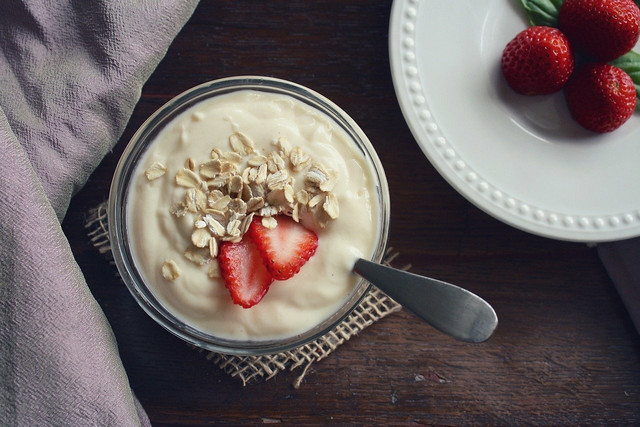


(Foto: CC0 / Pixabay / ponce_photography)
Many yogurts, especially ones that are sweet and fruit flavoured, contain HFCS. Look for organic yogurt, or carefully read the label before buying to ensure that there is no HFCS or any other unnecessary ingredients added.
The best way to ensure that yogurt doesn’t contain added sugars is to make homemade yogurt and try this vegan yogurt recipe. Having a bowl of plain greek yogurt with no added sugar, and topping it with fresh fruits such as berries is a healthy, balanced breakfast.
6. Ketchup



(Foto: CC0 / Pixabay / Alexas_Fotos)
Ketchup may be one of the foods with high fructose corn syrup that you didn’t know about. Much like most store-bought condiments, HFCS is a main ingredient in ketchup. Many manufacturers add HFCS in order to add a sweet taste to the sauce. When you are at the store, look for ketchup that is natural and has as few ingredients as possible, especially no HFCS or added sugars.
7. Salad Dressings
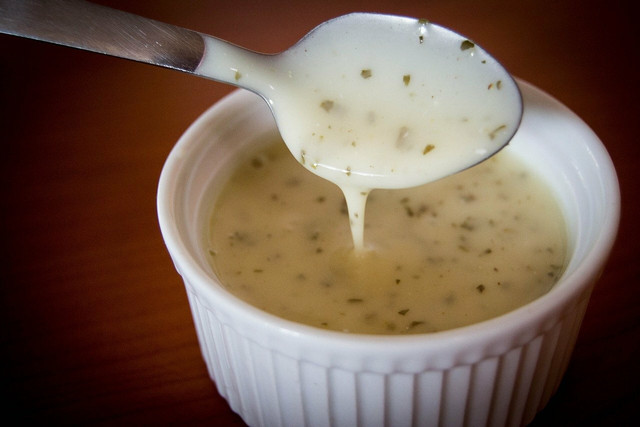


(Foto: CC0 / Pixabay / ailinder)
Store-bought salad dressings are often loaded with HFCS. In particular ‘lite’ or ‘reduced calorie’ salad dressings contain even more HFCS in order to add a sweet taste to compensate for the lack of flavour due to the removal of fat in the recipes. Before you pour salad dressing over your healthy salad, be sure to read the ingredients list. Try making your own homemade Italian salad dressing or vegan Thousand Island dressing instead.
8. Fruit Juices
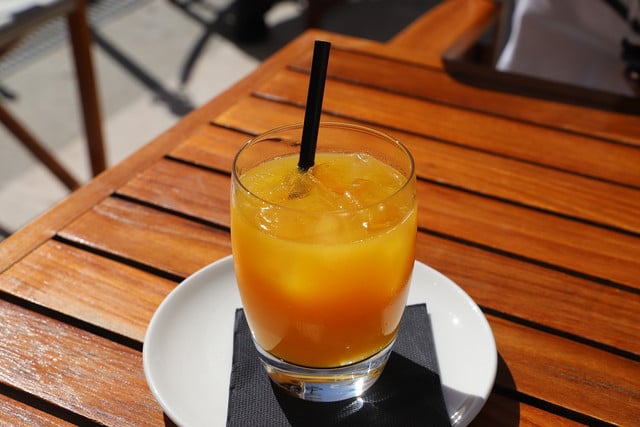


(Foto: CC0 / Pixabay / MrJayW)
Many fruit juices contain HFCS. You can check the ingredients label of your juice to check what percentage is real fruit juice. A study from 2014 has found that intake of sweetened fruit juice is associated with a higher risk of type 2 diabetes.
Instead of drinking fruit juices that are full of sugar, eat whole fruits. This way you will nourish your body with vitamins and minerals without spiking your blood sugar levels. Eating whole fruits will also provide your body with more fibre compared to drinking fruit juice, and making this switch is a good way to cut out sugar from your diet.
9. Pasta Sauce
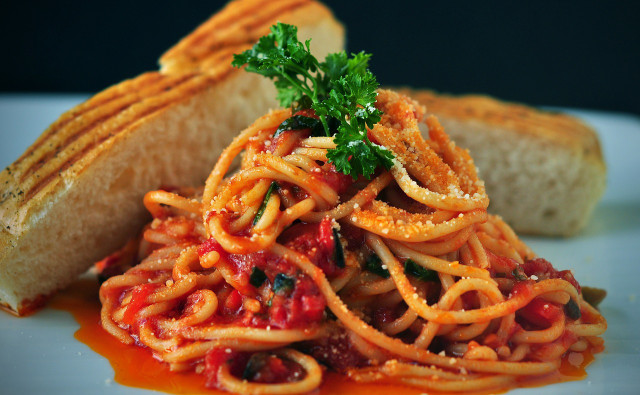


(Foto: CC0 / Pixabay / joshuemd)
Store-bought, processed pasta sauces are often full of HFCS, as are ready-made pasta dinners. Manufacturers will often add HFCS to recipes in order to add to the flavour and make the sauces taste sweeter. A 2015 study has linked the consumption of ready-made meals, such as store-bought pasta sauces, with an increased risk of obesity.
It is easy to make your own pasta sauce at home with just a few ingredients:
- Olive oil
- Onion
- Garlic
- Homegrown tomatoes
- DIY Italian seasoning
10. Instant Noodles
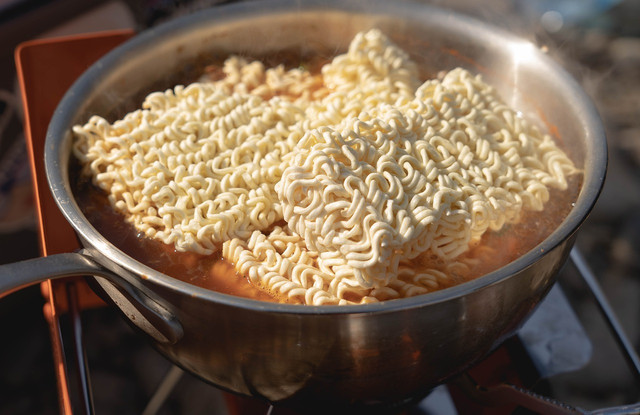


(Foto: CC0 / Pixabay / half_rain)
Instant noodles may be another food with high fructose corn syrup that you didn’t know about. A common misconception is that HFCS is used only in sweet foods. Instant noodles may seem like a good snack or meal as they are quick and easy to make, however, this convenience comes with many health risks. HFCS is often added to instant noodles in order to preserve the texture of the noodles. A 2017 study has linked instant noodle consumption with health issues such as high blood pressure, which is a side effect of HFCS.
While it isn’t the easiest thing to do, you can make your own ramen noodles and add them to fresh homemade ramen broth at home. Making your own homemade noodles ensures that you are eating a fresh meal that contains no unwanted ingredients such as HFCS.
Read on:
- Is Polyunsaturated Fat Good or Bad – All the Facts
- Balanced Meal Tips: 10 Rules for a Healthy Diet
- Healthy Grocery List: 6 Unhealthy Foods to Cross Out
Important Information regarding Health-related Topics.
** Links to retailers marked with ** or underlined orange are partially partner links: If you buy here, you actively support Utopia.org, because we will receive a small part of the sales proceeds. More info.Do you like this post?






